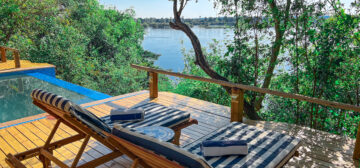Northern Kafue
Found in the centre of western Zambia, Kafue National Park is the oldest and largest of Zambia’s national parks. It covers a massive 22,400 km2. First established as a National Park in the 1950’s by the legendary Norman Carr, Kafue is one of the largest national parks in the whole of Africa. Despite its size and prominent location only two hours drive from Livingstone, it remains little-known and largely unexplored with vast tracts of its virgin bush still untouched. Thanks to its size and variety of habitat types the Kafue holds a fantastic diversity of wildlife.
The northern section of the Kafue National Park is a slightly undulating plateau, veined by rivers – the Lufupa, the Lunga, the Ntemwa, the Mukombo, the Mukunashi, and the Lubuji – which are all tributaries of the main Kafue, whose basin extends to the border with DRC. The main Kafue River is already mature by the time it reaches this park, though it has over 400km further to flow before discharging into the Zambezi.
Most of the park’s northern section, between the rivers, is a mosaic of miombo and mopane woodlands, with occasional open grassy pans known as dambos. The edges of the main rivers are lined with tall hardwood trees. Raintrees (Lonchocarpus capassa); knobthorns (Acacia nigrescens); jackalberries (Diospyros mespiliformis); leadwoods (Combretum imberbe); and especially sausage trees ( Kigelia africana) are all very common.




